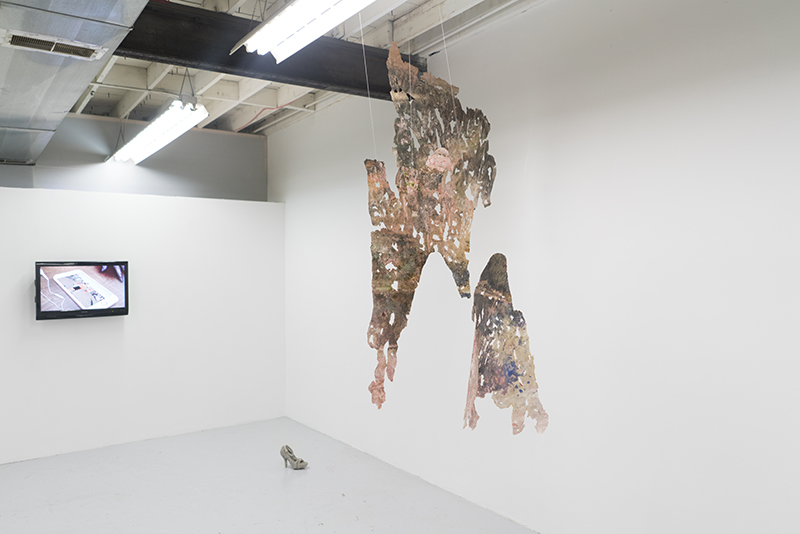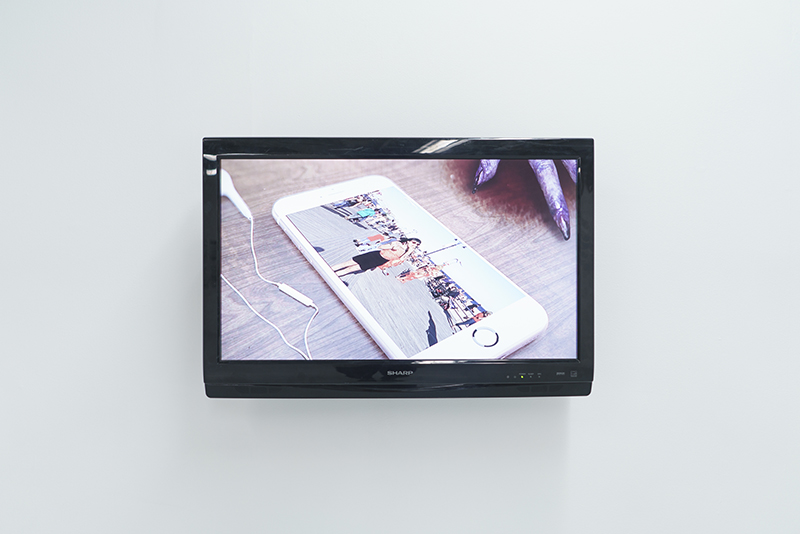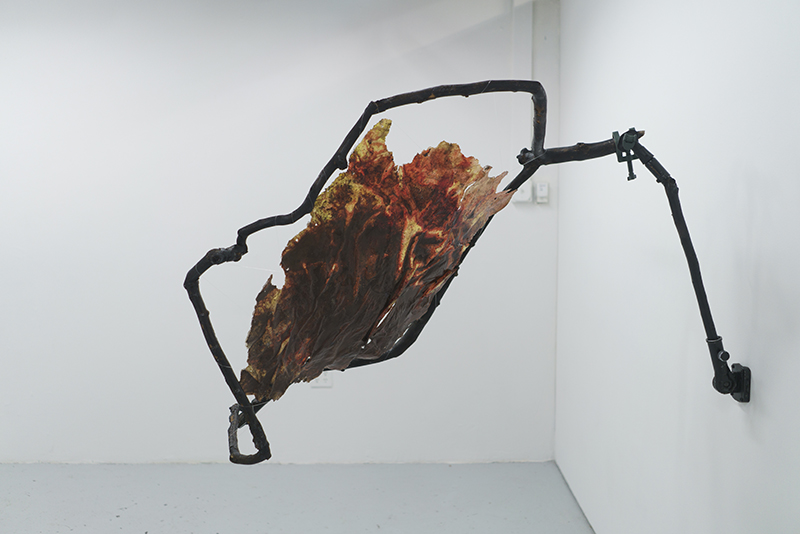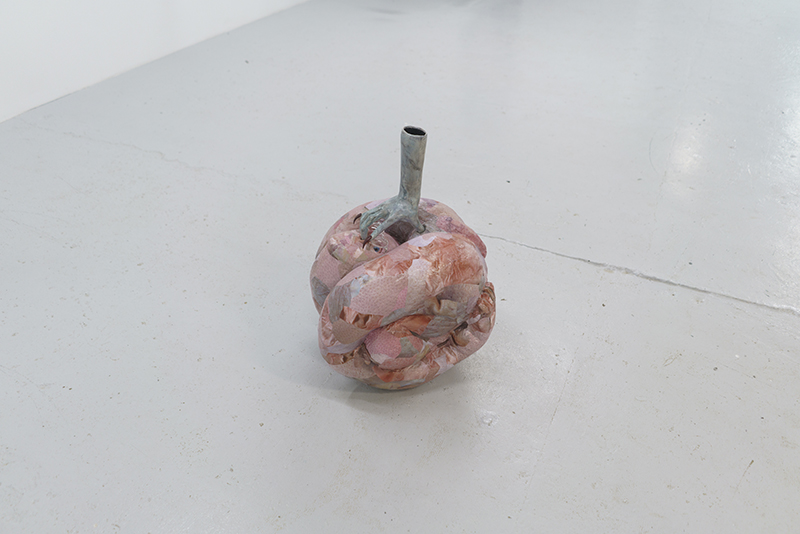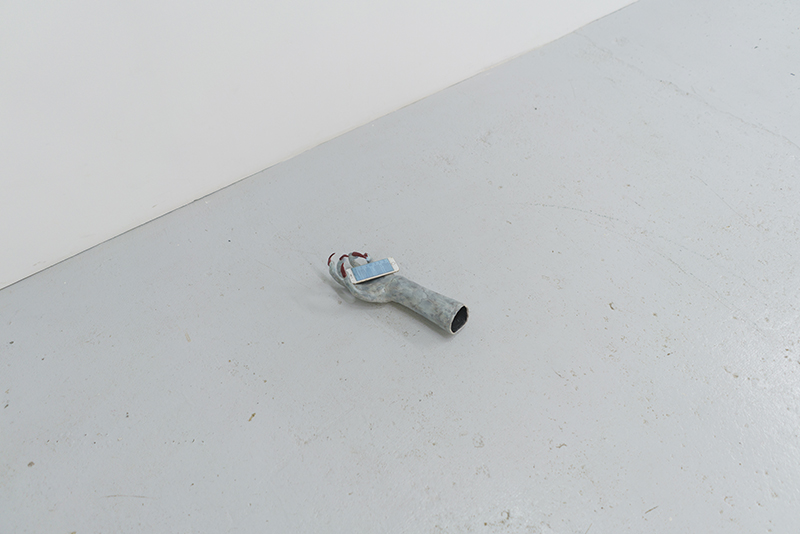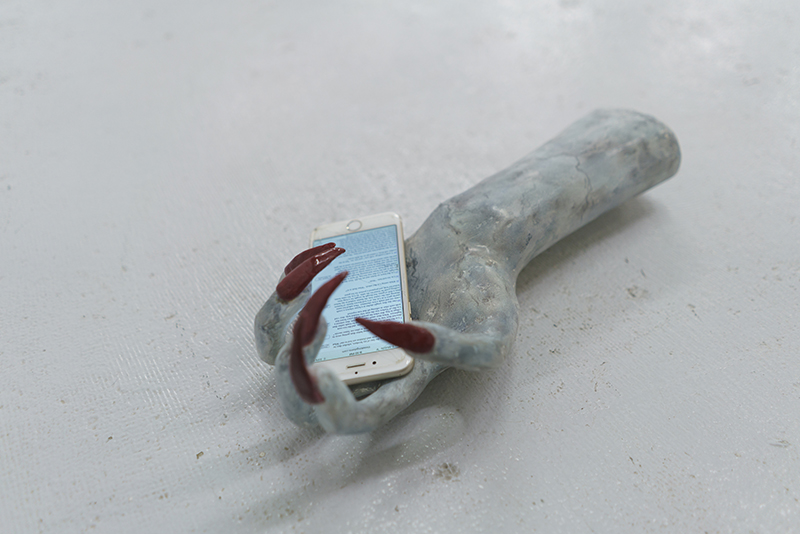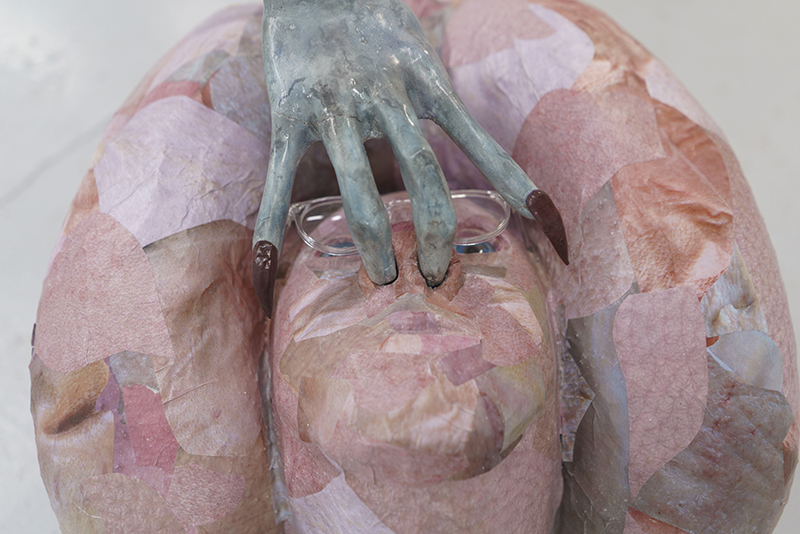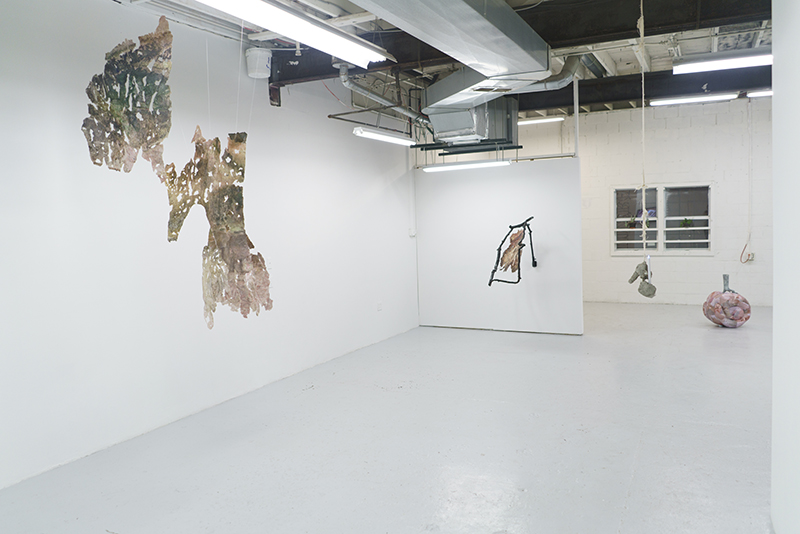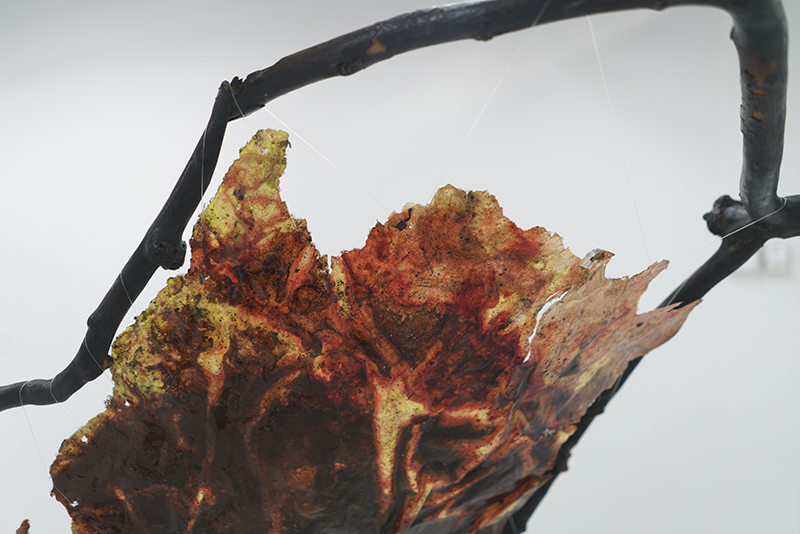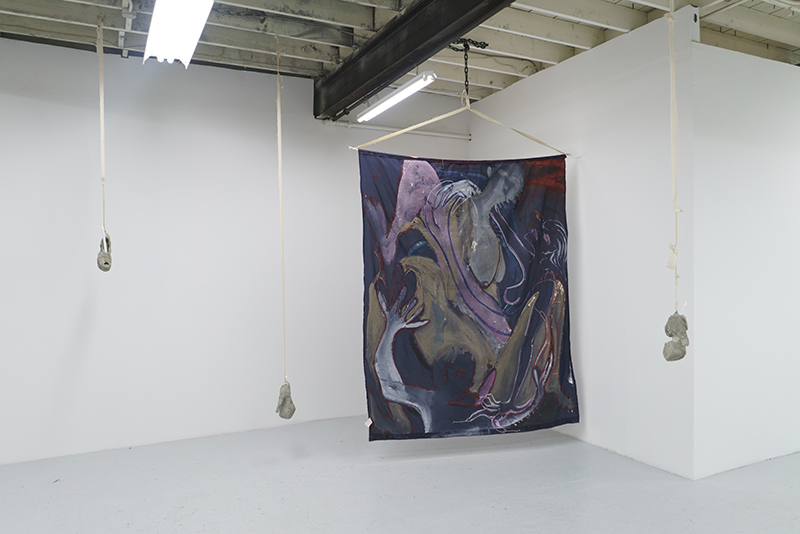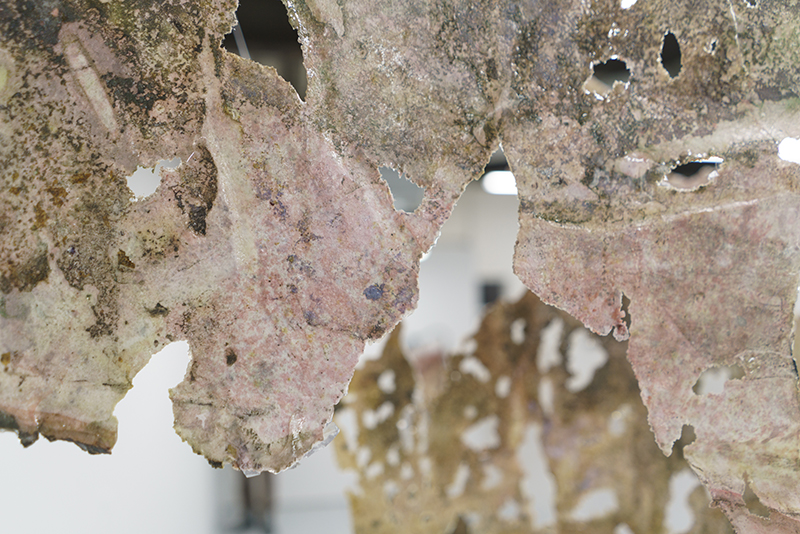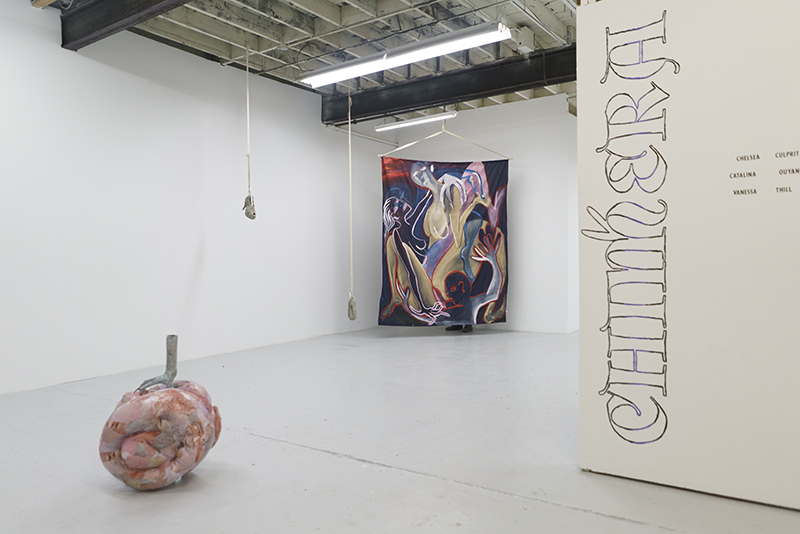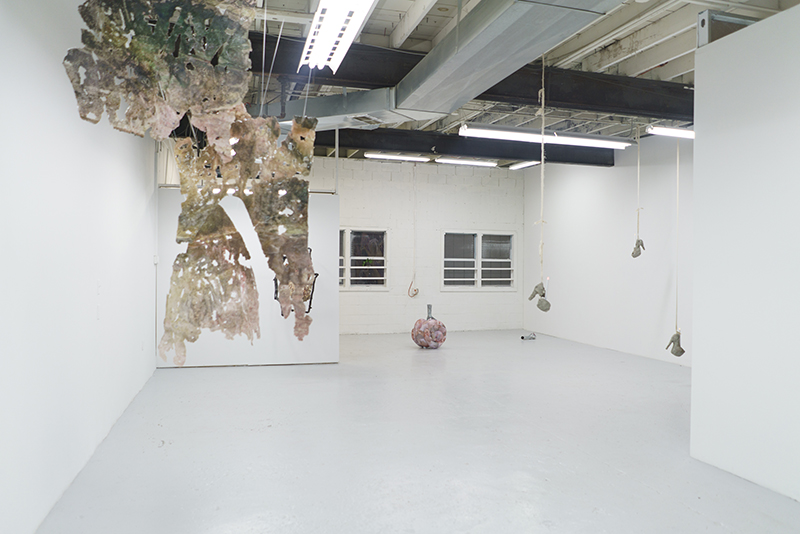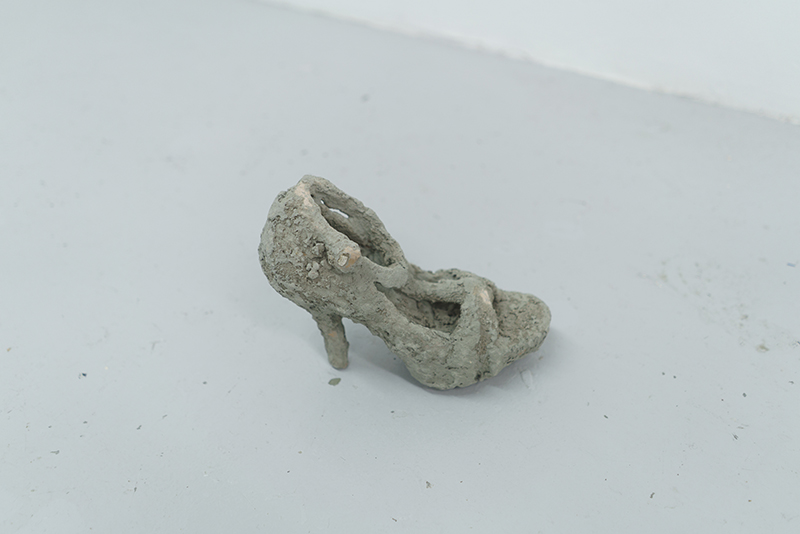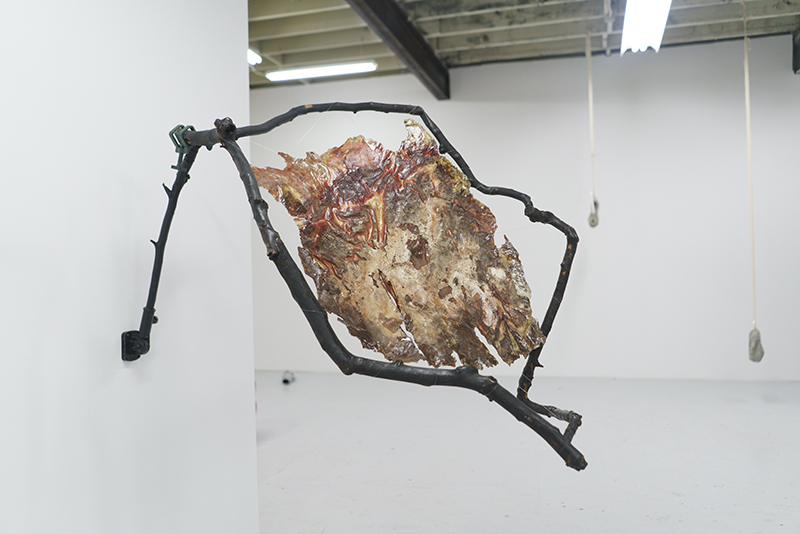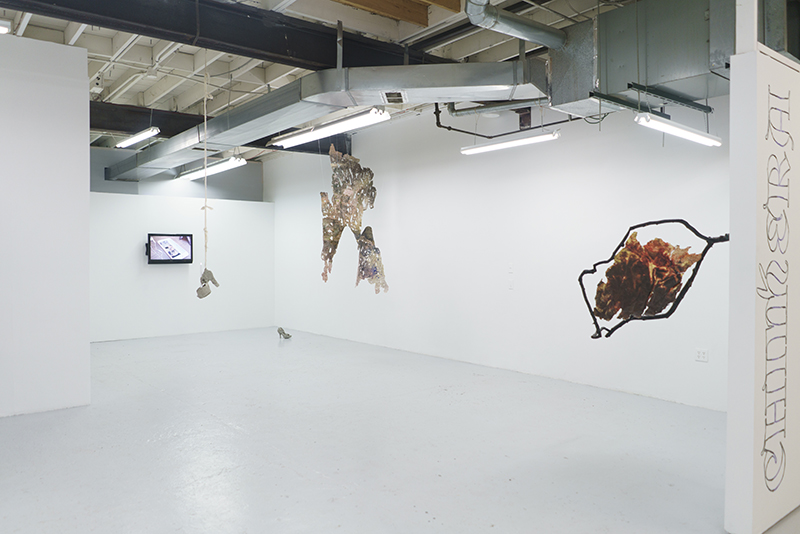
Chimera
No Place Gallery is pleased to present Chimera, a group exhibition of new works by Chelsea Culprit, Catalina Ouyang, and Vanessa Thill. The works on view include paintings, sculpture, and video that represent each of the three artists’ approach to manipulating many forms of intimacy, hybridity, possession, and restraint that are scattered throughout the exhibition.
The Khimaira (Chimera) in Greek Mythology was a three-headed monster which ravaged the countryside of Lycia in Anatolia. It was a bizarre fire-breathing creature with the body and head of a lion, a goat’s head rising from it’s back, the udders of a goat, and a serpent for a tail. The creature has been described as female, and was of divine origin along with her other siblings; Cerberus, Sphinx, Hydra, and Orthrus. Breathing fire from her mouth, the Chimera ravaged and terrorized much of what was around her.
Throughout the ages, ideas of hybridity was often depicted in mythology in the form of a fearsome creature, or an entity of temptation or trickery. Vanessa Thill’s sculptures, Osmo-Troika, and Racket use a range of materials such as salt, spices, resin, charred wood, detergents, coffee, soap, fake blood, shellac, and other obtainable fluids and substances to create an elixir that is coated onto various types of ripped or perforated paper. These works hang and bend in the space like jagged mutated garments; stiff and looming in the space through the support of the hardware securing them.
Fragmentation of the body is another recurring theme throughout the exhibition. Catalina Ouyang’s sculpture The New White Meat simulates flesh through the use of digital images as a portrait of her lover who is a distorted, curled ball of pig skin and raw pork. Power dynamics shift and skew, as the seemingly immortal bodies interacting in the work both display different ideas and histories of possession and liberation in love. Two glove-like hands extend from an absent body: one hand plunging into the orifices of the lover, the other hand holding an iPhone, mid-scroll through a chapter from the Chinese legend Romance of the Three Kingdoms, in which a wife is casually cannibalized in order to feed an army. Here, violence and its retribution are chaotically and erotically transferred, in the absence of institutional justice.
One video work, More Meat, acts as a contemporary memento mori featuring an iPhone with headphones and a gnarled, purplish hand. The iPhone plays a vernacular video: in the foreground, the artist at Coney Island eats a processed meat sausage; in the background, a street performer embodies the Monkey King, a primary character in the Chinese legend Journey to the West, as children in passing play-act as Chinese warriors. It is ambiguous what in the still life is an active player or passive witness; the hand, animate and attached to a living thing, or taxidermied and dead? More Meat is interested in violence that both hides and emerges in plain sight.
As the body is disjointed throughout the exhibition, it is also mingling, and melting together with other figures and materials. Chelsea Culprit’s large painting series You Don’t Own Me on bed sheets depict multiple figures that are caressing each other, displaying a mix of emotions that include feelings of ecstasy, inclusion, jealousy, and disclusion of the foreplay taking place. The forms are weaving and combining, as they rest on the wall or dangle in space as double sided pictures. Shreds of bandages hang from the ceiling to hold heavy heels of concrete that are battered and lit with LED candles like memorials. These discarded objects suggest themselves as markers of a lesser known narrative or history.

